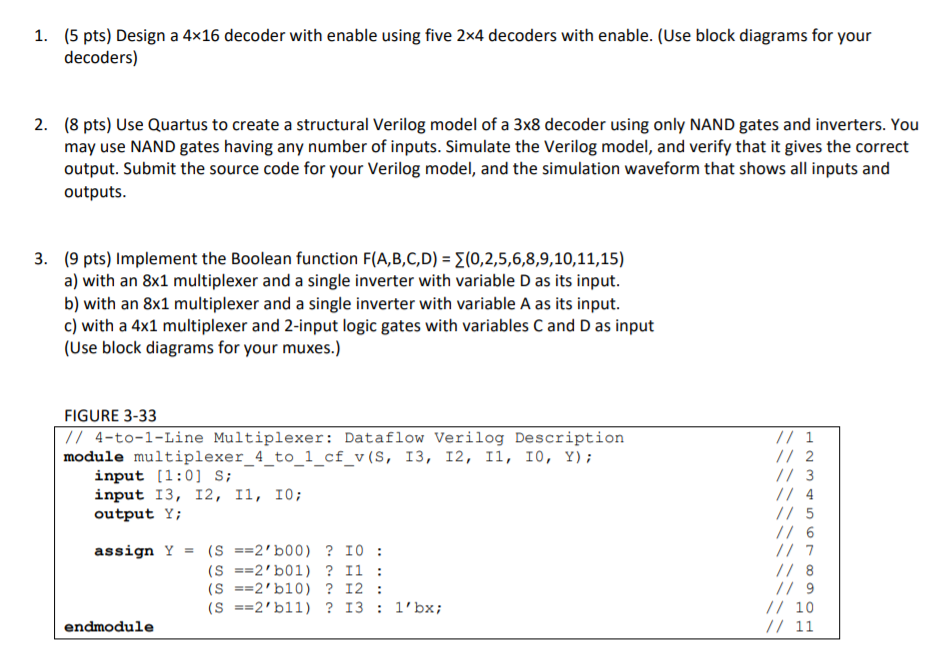

Verilog Programming Series – 2 to 4 Decoder November 7, 2019 May 16, 2020 Sivakumar P R This video explains how to write a synthesizable Verilog program for 2to4 Decoder using the ‘case’ statement and the importance of default statement while implementing the combinational logic. Write a verilog program for 2 to 4 decoder A decoder is a multiple input, multiple output logic circuit that converts coded inputs into coded outputs where the input and output codes are different. The enable inputs must be ON for the decoder to function, otherwise its outputs assumes a ‘disabled’ output code.
Decoder is a digital circuit that can select a line according to the input pattern. Decoder can be used as a control unit for a MCU,processor etc. 4 to 16 line decoder verilog code arr given bellow.
module decoder(x,y,z,w,e,d);
input w,x,y,z,e;
output [15:0]d;
assign d[0]= (~x) & (~y) &(~z) & (~w) & (e) ;
assign d[1]= (~x) & (~y) &(~z) & & (e) ;
assign d[2]= (~x) & (~y) &(z) & (~w) & (e) ;
assign d[3]= (~x) & (~y) &(z) & & (e) ;
assign d[4]= (~x) & (y) &(~z) & (~w) & (e) ;
assign d[5]= (~x) & (y) &(~z) & & (e) ;
assign d[6]= (~x) & (y) &(z) & (~w) & (e) ;
assign d[7]= (~x) & (y) &(z) & & (e) ;
assign d[8]= (x) & (~y) &(~z) & (~w) & (e) ;
assign d[9]= (x) & (~y) &(~z) & & (e) ;
assign d[10]= (x) & (~y) &(z) & (~w) & (e) ;
assign d[11]= (x) & (~y) &(z) & & (e) ;
assign d[12]= (x) & (y) &(~z) & (~w) & (e) ;
assign d[13]= (x) & (y) &(~z) & & (e) ;
assign d[14]= (x) & (y) &(z) & (~w) & (e) ;
assign d[15]= (x) & (y) &(z) & & (e) ;
How To Make 4 To 16 Decoder Using 2 To 4 Decoder
endmodule

module decoder2();
reg x0,y0,z0,w0,e0;
wire [15:0]dd;
initial
begin
e0=0;
x0=0;
y0=1;
z0=0;
w0=1;
4 To 16 Decoder Using 2 To 4 Decoder With Enable
#10 e0=1;
#00 x0=0;
#00 y0=0;
#00 z0=0;
#00 w0=0;
#10 x0=0;
#00 y0=0;
#00 z0=1;
#00 w0=1;
#10 x0=0;
#00 y0=1;
#00 z0=0;
#00 w0=0;
#10 e0=0;
end
decoder s(.d(dd),.e(e0),.x(x0),.y(y0),.z(z0),.w(w0));
endmodule